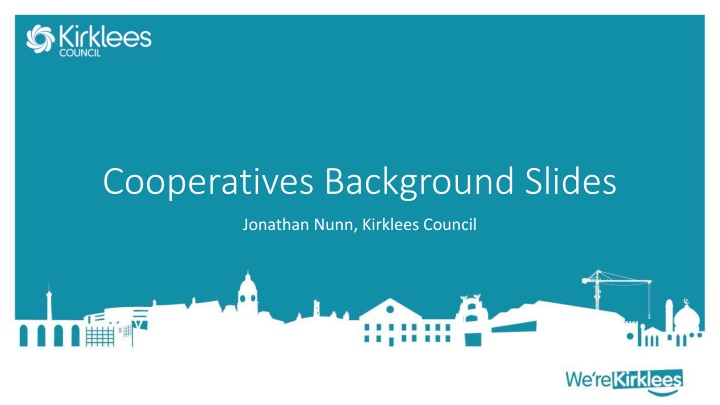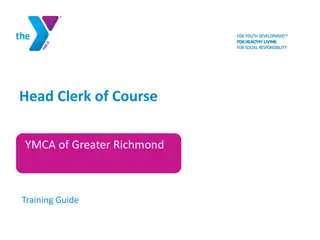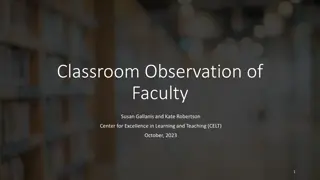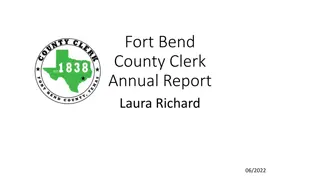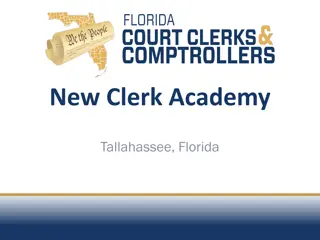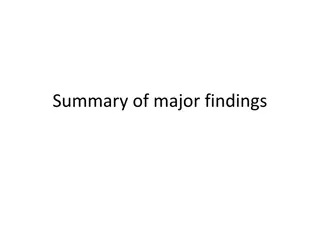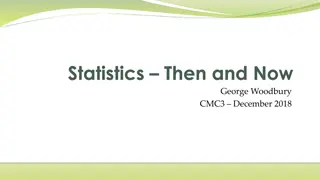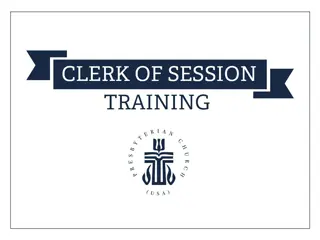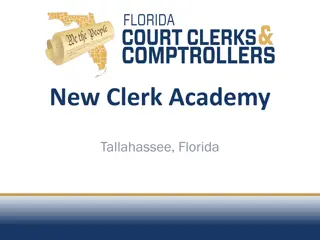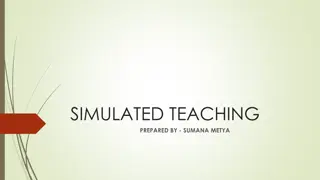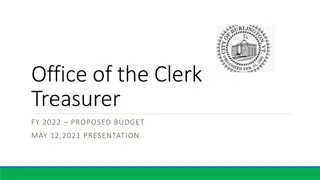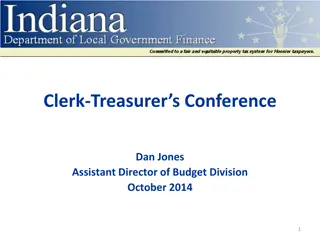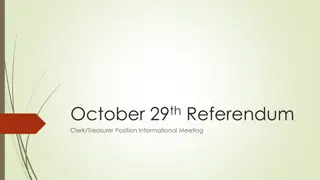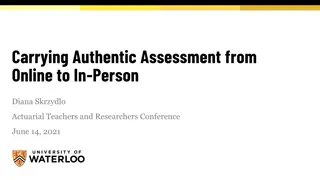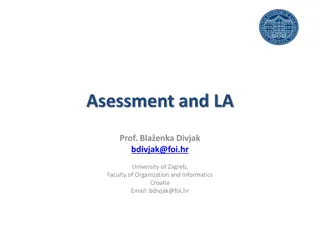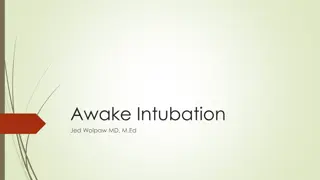Intubation Clerk Teaching & Assessment
This template covers the essential steps for intubation, including airway assessment, equipment selection, patient positioning, laryngoscopy techniques, and tube placement verification. Clear instructions and images guide learners through each stage of the intubation process to ensure competency in this critical skill."
Download Presentation

Please find below an Image/Link to download the presentation.
The content on the website is provided AS IS for your information and personal use only. It may not be sold, licensed, or shared on other websites without obtaining consent from the author.If you encounter any issues during the download, it is possible that the publisher has removed the file from their server.
You are allowed to download the files provided on this website for personal or commercial use, subject to the condition that they are used lawfully. All files are the property of their respective owners.
The content on the website is provided AS IS for your information and personal use only. It may not be sold, licensed, or shared on other websites without obtaining consent from the author.
E N D
Presentation Transcript
Cooperatives Background Slides Jonathan Nunn, Kirklees Council
The Range of Alternative Business Models Employee- Owned Business Business Employee- Owned Community Business Business Community Social enterprise enterprise Social Cooperative Cooperative Charity Charity
How does this fit together? Co-operative Charity Community Business Social Enterprise Voluntary Community and Social Enterprise (VCSE)
What is a cooperative? A co-operative is a business or organisation that s democratically owned and controlled by its members, to meet their shared needs. The members can be its customers, workers, residents, service users or suppliers. Co-operatives can take multiple legal forms
Legal Forms Incorporation Registered Society Company LLP (S)CIO Private Company Limited by Guarantee Private Company Limited by Shares Public Limited Company (PLC) Co-operative Society Community Benefit society CIC Limited by Guarantee CIC Limited by Shares Community Interest PLC Charitable Benefit Society
Employee-owned Business Employee-owned businesses are totally or significantly owned by their employees but experience different levels of democracy. Employee ownership can take one of three forms: Direct employee ownership Indirect employee ownership (e.g. employee trust) Combined direct and indirect ownership Employee ownership typically happens in one of the following scenarios: Business succession or ownership succession Growth and Expansion Public Service Spin-Outs Start Ups Insolvency or closure threat Employee Ownership Trusts as a business succession route received tax incentives through the Finance Act 2014.
Why do we need something different?
A Key Part of Community Wealth Building Concept articulated by CLES based on the five pillars: Plural ownership of the economy Making financial power work for local places Fair employment and just labour markets Progressive procurement of goods and services Socially productive use of land and property Source: https://cles.org.uk/community-wealth-building/what-is-community-wealth-building/
How do we really create inclusive growth what do we need to do differently? Nationally the bottom 10% have seen no improvement in living standards in 20 years Source: New Economics Foundation, 2021. Analysis ONS HBAI in The UK s Living Standard s Crisis.
Connections to Doughnut Economics climate change ECOLOGICAL CEILING thesafeandjustspaceforhumanity water ozone layer ocean acidification depletion Mainstream business models focused on wealth accumulation, linear extraction- production-disposal models Alternatives increase focus on meeting social foundations and keeping within ecological limits SOCIAL FOUNDATION food health air pollution chemical pollution income & work peace & justice phosphorus loading biodiversity social equity nitrogen & REGENERATIVE AND DISTRIBUTIVE ECONOMY political voice loss freshwater withdrawls land conversion Source: Doughnut Economics Action Lab, About Doughnut Economics
Thinking Like a 21st Century Economist Regenerative by Design Distributive by Design Source: Doughnut Economics Action Lab, About Doughnut Economics
Anchor Networks Greater impact can be achieved when anchor institutions work together. These are defined by CLES as organisations which: Have an important presence in a place, usually through a combination of: being largescale employers, the largest purchasers of goods and services in the locality, controlling large areas of land and/or having relatively fixed assets. Are tied to a particular place by their mission, histories, physical assets and local relationships. Examples include local authorities, NHS trusts, universities, trade unions, large local businesses, the combined activities of the community and voluntary sector and housing associations. Organisations may wish to conduct an Anchor Self-Assessment using the JRF progression framework in 2019 Source: https://cles.org.uk/what-is-community-wealth-building/what-is-an-anchor-institution/
Cooperatives Globally 3mcooperatives US$2.15tnrevenue 1bnmembers 1 in 10 of global employed population Source: International Cooperative Alliance. https://www.ica.coop/en/cooperatives/facts-and-figures. Accessed 10/11/2023. Source: International Cooperative Alliance 2022. World Cooperative Monitor 2022.
The Coop Economy in the UK 7,586businesses 40.9bnrevenue 14.3mmembers 249,142employees Source: Co-operatives UK, 2023. Co-operative and Mutual Economy 2023
There are coops in every industry Source: Co-operatives UK, 2023. Co-operative and Mutual Economy 2023
Believed Benefits of Cooperatives Productivity / growth Resilience Community / social capital Good work Environmental impact Reduced poverty
Benefits of Coops and Social Enterprises R&D investment as % of GDP and social enterprise and cooperatives turnover as % of GDP Investment as % of GDP and % of workers employed by cooperatives in Europe s five largest economies by country Investment as % of GDP and social enterprise and cooperatives turnover as % of GDP Source: Ending the Monoculture. Social Enterprise UK, 2024.
Benefits of Coops and Social Enterprises Workers that report having access to a trade union, works council or similar committee and social enterprise and cooperatives turnover as % of GDP Work Intensity Index (2005-2015 average score) by country and social enterprise and cooperatives turnover as % of GDP Source: Ending the Monoculture. Social Enterprise UK, 2024.
Benefits of Employee Ownership Productivity EOBs are 8-12% more productive than non-EOBs (GVA / employee). R&D Investment EOBs >50% more likely to have increased R&D investment than non-EOBs in last 5yrs EOBs >50% more likely to be expanding their workforce than non-EOBS (64% of EOBs increased employee headcount in the last five years, compared to 41% of non-EOBs). Job Creation EOBs make up 0.1% of businesses but drive 0.8% of direct GVA and 1.7-2.1% of overall economic activity (reflecting direct, indirect and induced GVA). Economic contribution The majority of EOBs (57%) reported profits increasing since becoming EO and EOBs are over 25% more likely to have seen profits increase in the last five years than non-EOBS. Company profits Source: Employee Ownership Association 2023. The Knowledge Hub 2023.
